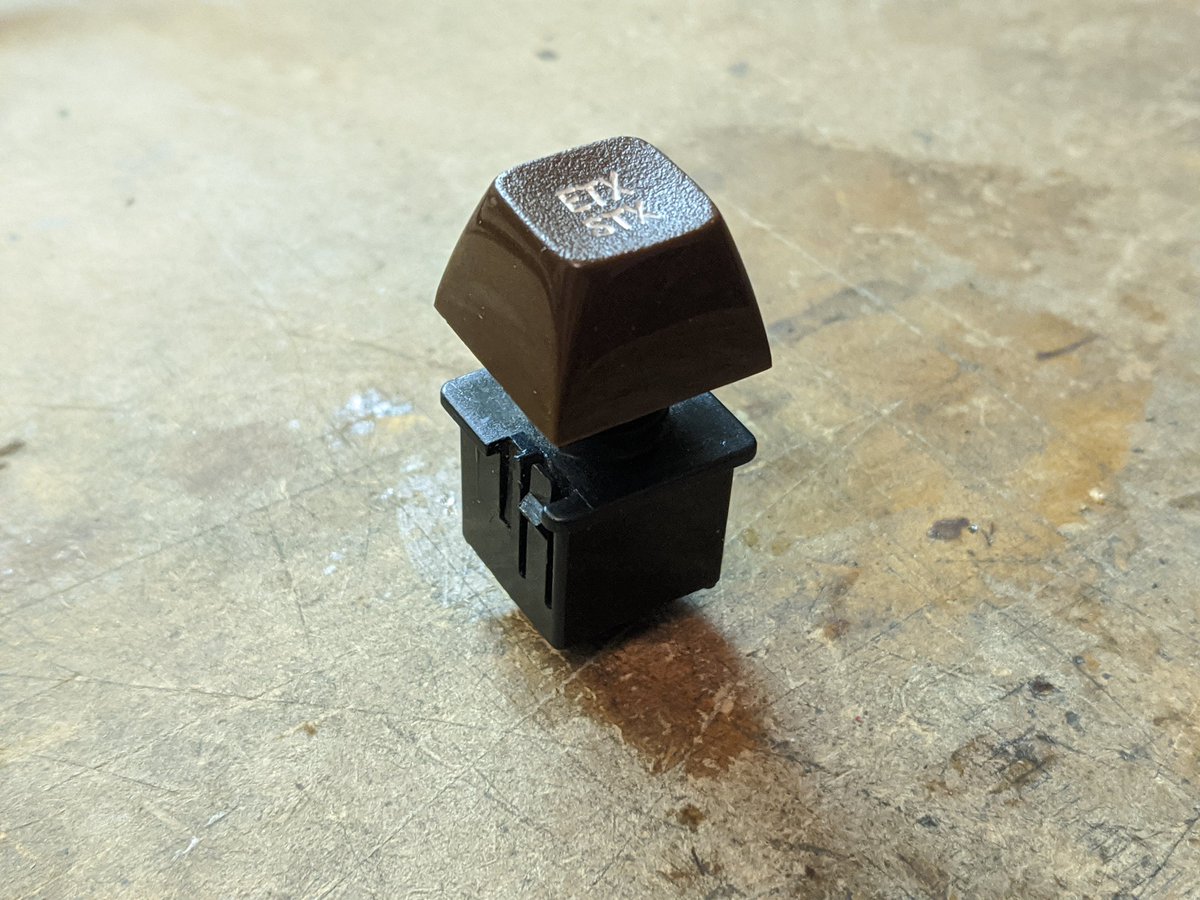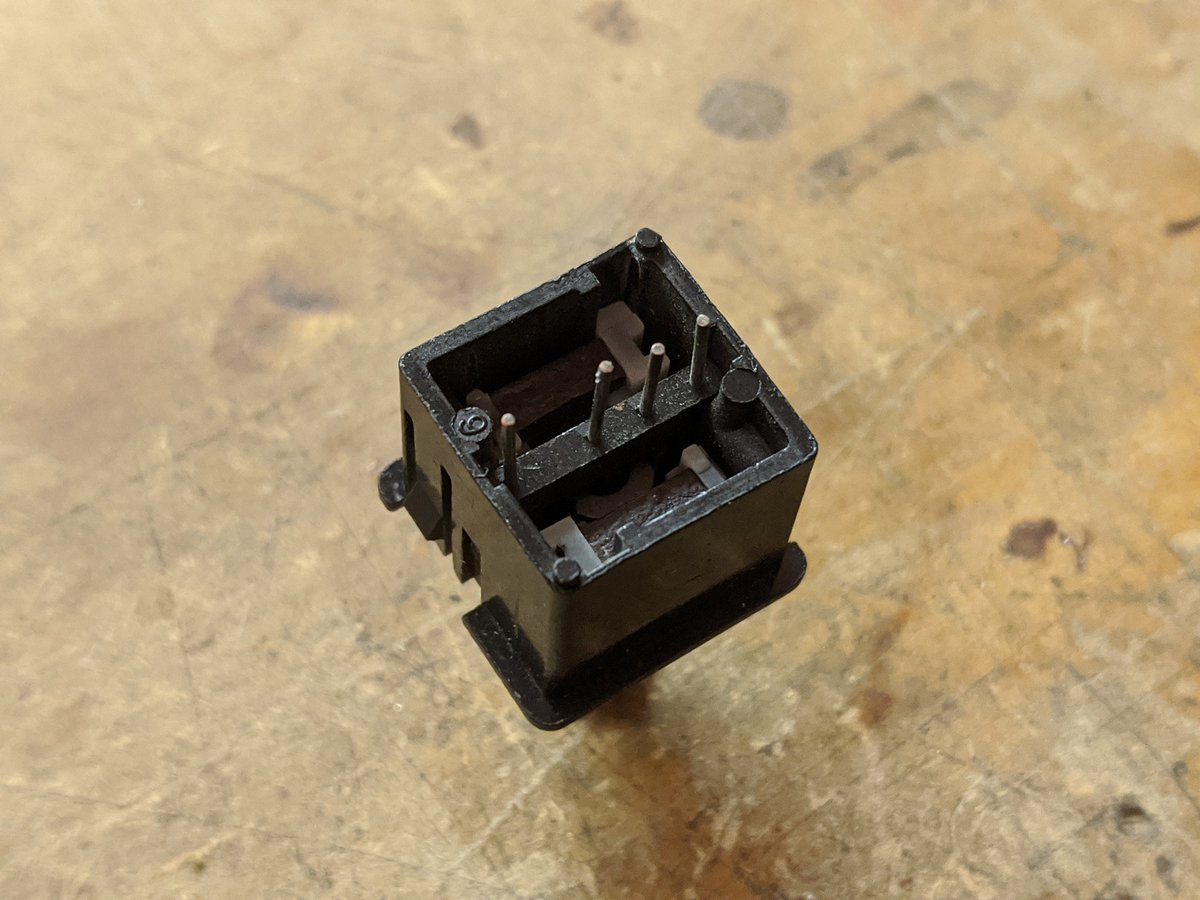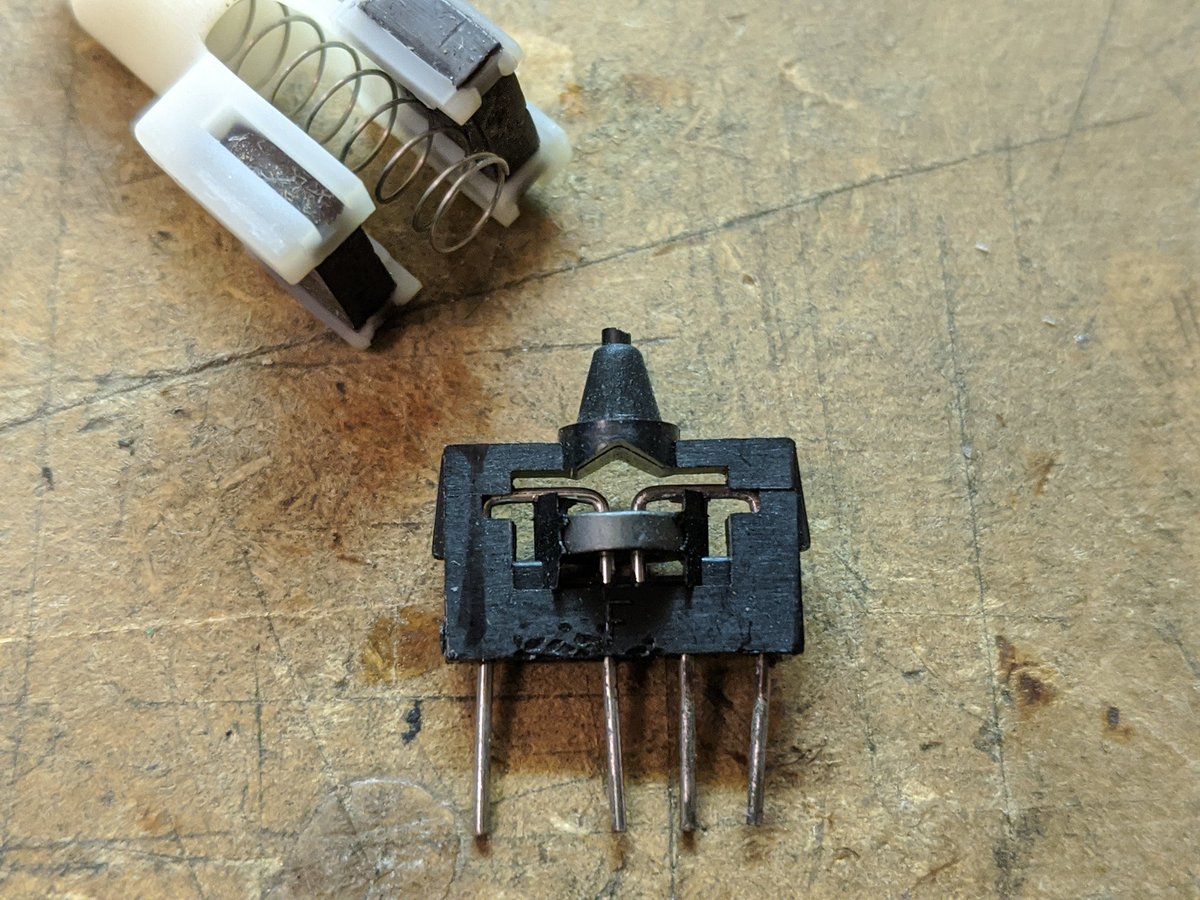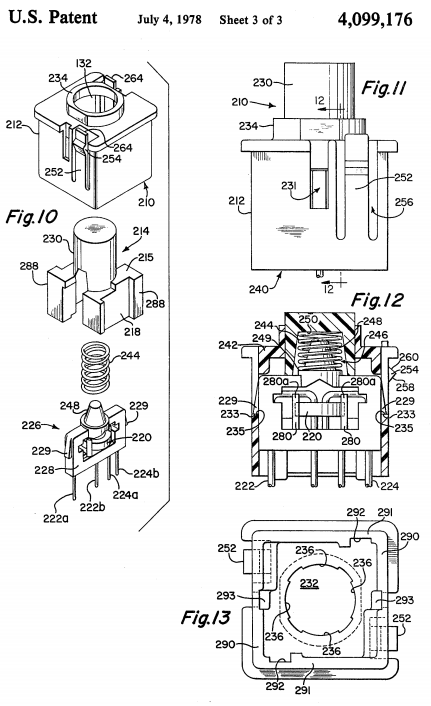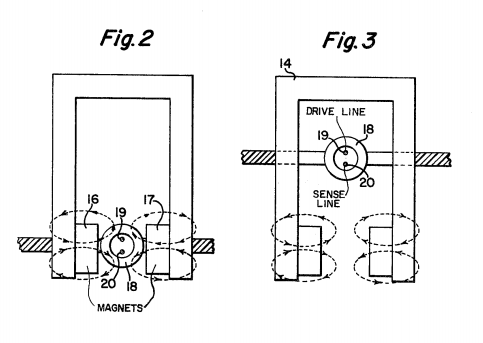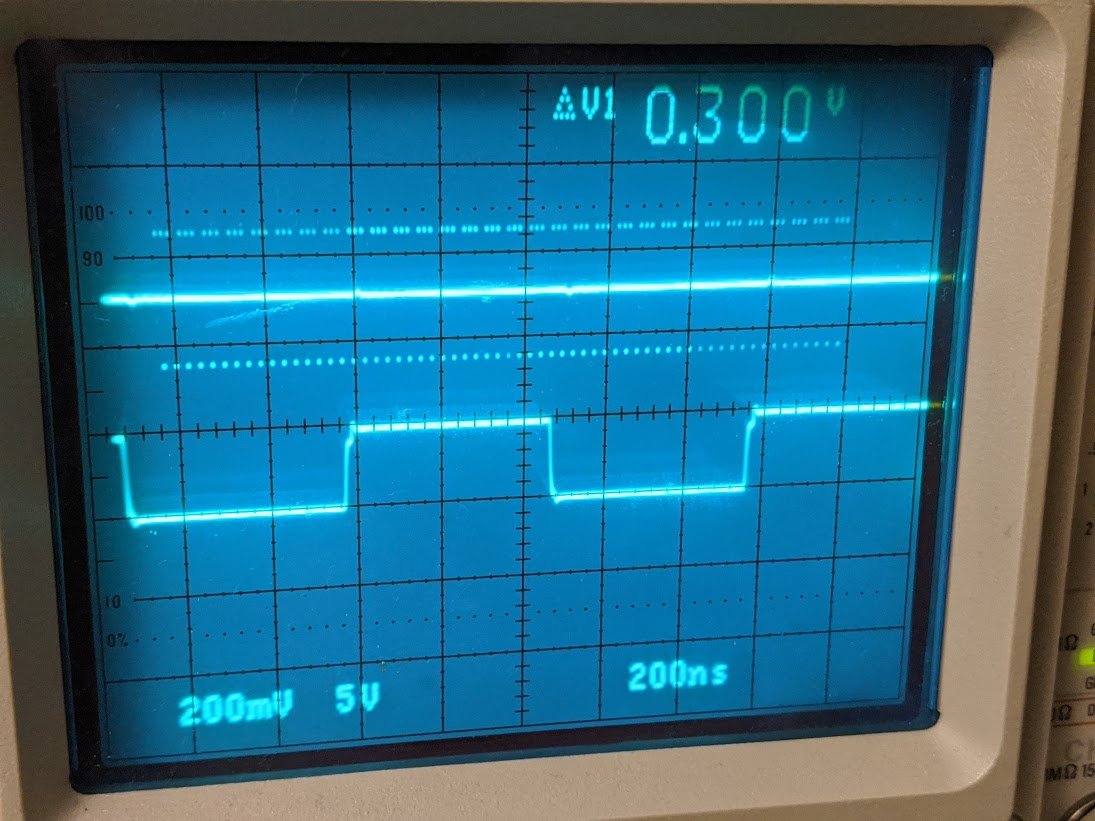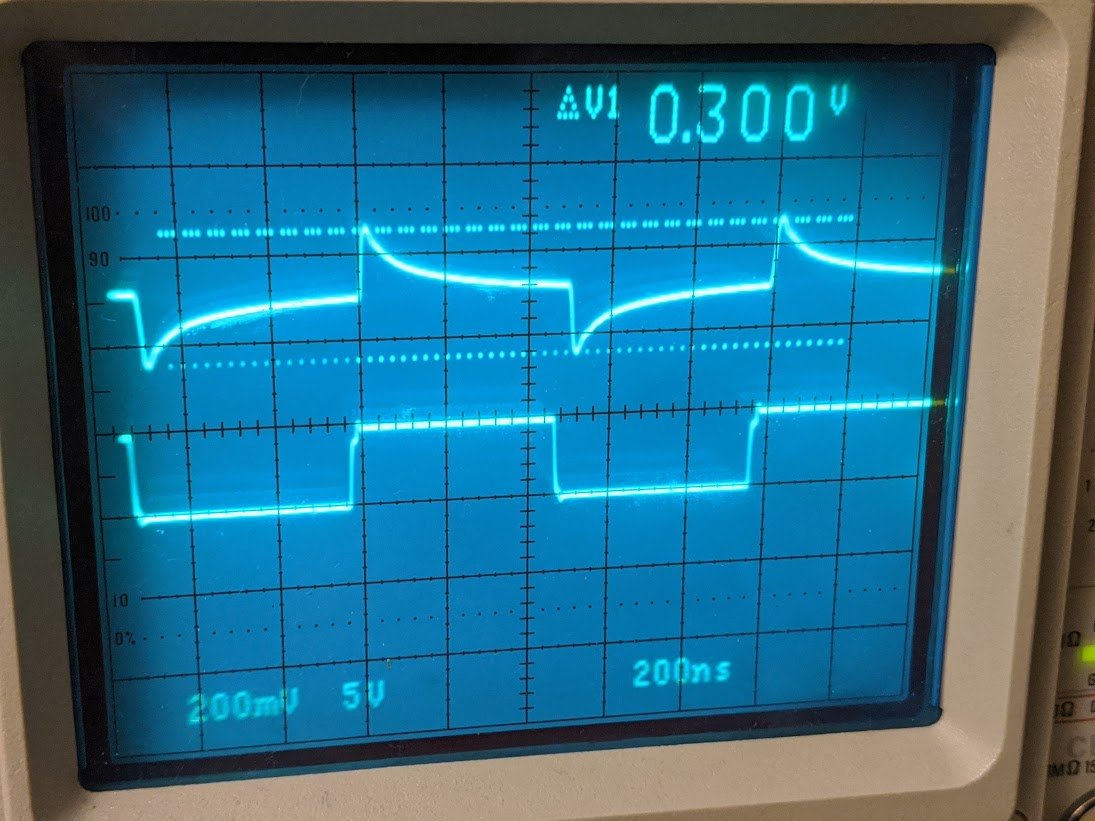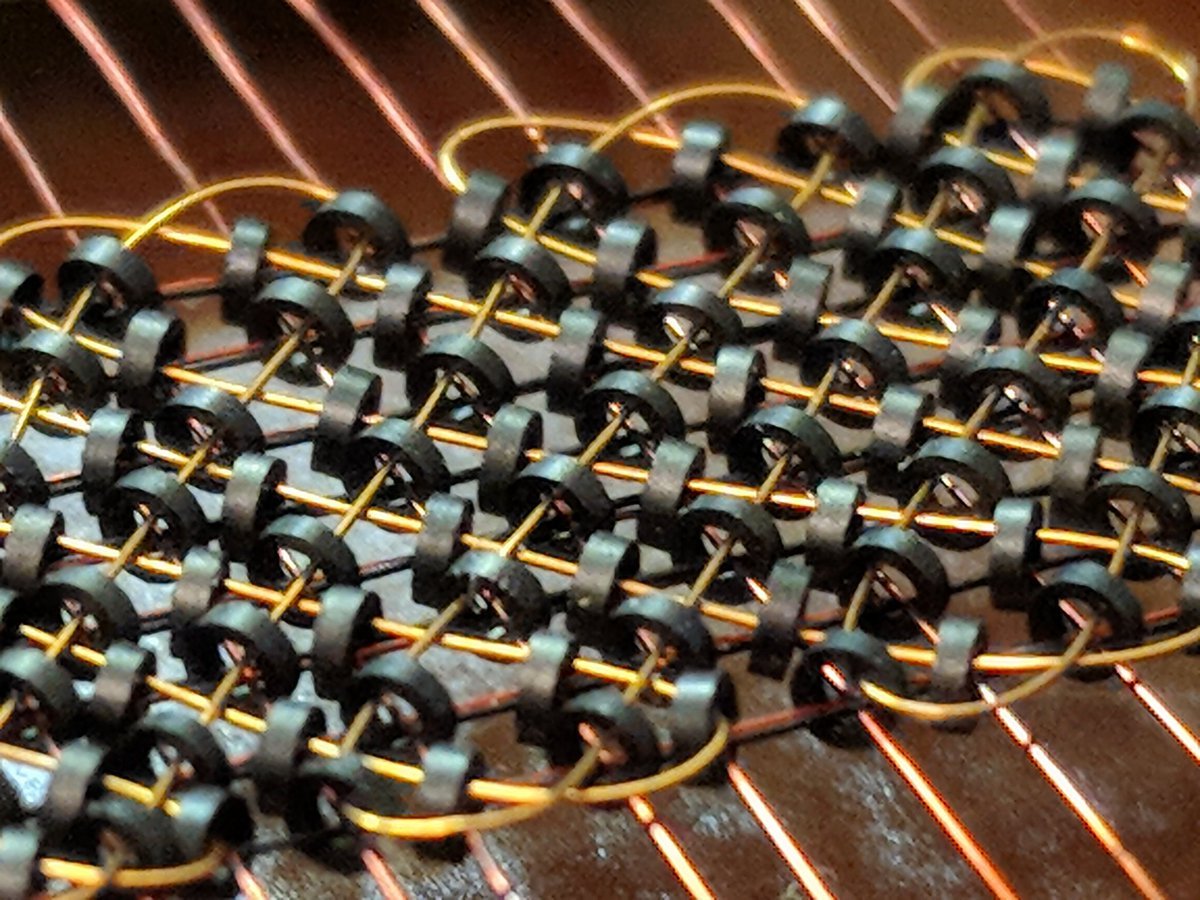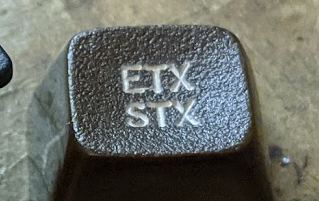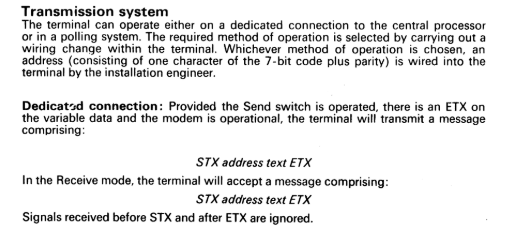now here is a very unusual keyboard keyswitch. let& #39;s examine it closely...
the wires pass through a ferrite toroid. this key switch is a transformer! it has a 1 turn primary and a 1 turn secondary.
so how does it work? let& #39;s take a look at the patent. this is one of those rare cases where the patent *exactly* matches the physical object.
the normal position (up) is in Fig 2. the two magnets saturate the magnetic field in the ferrite core, which *prevents* it from acting as a transformer! when you push the key down, it moves the magnets away, and the transformer can operate normally.
to use this keyswitch you just have to present it with a pulse train and check to see if it couples from the input to the output. notice that the output (upper trace) is the derivative of the input due to Faraday& #39;s law (change in flux=>voltage)
so how do you wire this keyswitch into a matrix? simple, you place the keys in a grid and connect the drive lines in a column in series and the sense lines in a row in series (or vice versa). then you pulse each drive line in turn and amplify the signals from the sense lines...
if that& #39;s starting to sound familiar, that& #39;s because it& #39;s very similar to core memory, even down to the ferrite toroids!
this type of keyswitch has some huge advantages.
 https://abs.twimg.com/emoji/v2/... draggable="false" alt="✔️" title="Heavy check mark" aria-label="Emoji: Heavy check mark">no contacts to wear out--quite reliable!
https://abs.twimg.com/emoji/v2/... draggable="false" alt="✔️" title="Heavy check mark" aria-label="Emoji: Heavy check mark">no contacts to wear out--quite reliable!
 https://abs.twimg.com/emoji/v2/... draggable="false" alt="✔️" title="Heavy check mark" aria-label="Emoji: Heavy check mark">simple to manufacture
https://abs.twimg.com/emoji/v2/... draggable="false" alt="✔️" title="Heavy check mark" aria-label="Emoji: Heavy check mark">simple to manufacture
 https://abs.twimg.com/emoji/v2/... draggable="false" alt="✔️" title="Heavy check mark" aria-label="Emoji: Heavy check mark">only 1 moving part
https://abs.twimg.com/emoji/v2/... draggable="false" alt="✔️" title="Heavy check mark" aria-label="Emoji: Heavy check mark">only 1 moving part
 https://abs.twimg.com/emoji/v2/... draggable="false" alt="✔️" title="Heavy check mark" aria-label="Emoji: Heavy check mark">safe for explosive atmospheres
https://abs.twimg.com/emoji/v2/... draggable="false" alt="✔️" title="Heavy check mark" aria-label="Emoji: Heavy check mark">safe for explosive atmospheres
some cons though:
 https://abs.twimg.com/emoji/v2/... draggable="false" alt="❌" title="Cross mark" aria-label="Emoji: Cross mark">sense circuitry slightly more complex
https://abs.twimg.com/emoji/v2/... draggable="false" alt="❌" title="Cross mark" aria-label="Emoji: Cross mark">sense circuitry slightly more complex
 https://abs.twimg.com/emoji/v2/... draggable="false" alt="❌" title="Cross mark" aria-label="Emoji: Cross mark">patented (since expired)
https://abs.twimg.com/emoji/v2/... draggable="false" alt="❌" title="Cross mark" aria-label="Emoji: Cross mark">patented (since expired)
some cons though:
really the only reason i can see why it never took off is because it was patented. the sense circuitry wouldn& #39;t be terribly complex (basically just a flip flop with a low threshold voltage input)

 Read on Twitter
Read on Twitter